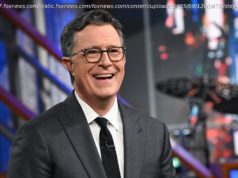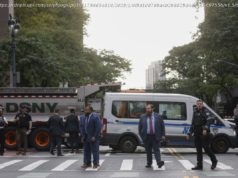President Trump has threatened to blow up global trade rules. Robert Lighthizer is the one who knows where to plant the explosives.
WASHINGTON — Robert Lighthizer just became one of the most powerful people in Washington.
Mr. Lighthizer, the United States trade representative, will spend the next 14 days deciding which countries, if any, will be exempt from the stiff and sweeping steel and aluminum tariffs that President Trump authorized on Thursday .
The issue is expected to dominate discussions in Brussels on Saturday between Mr. Lighthizer and his trade counterparts in Japan and the European Union, with the European trade commissioner saying on Thursday that Europe should be excluded. Dozens of other countries that import metals into the United States — such as Brazil, the United Arab Emirates and South Korea — are demanding a carveout or threatening retaliation if they are included.
It is a fight Mr. Lighthizer has been preparing for his entire life.
Mr. Lighthizer, 70, grew up in a well-off family in a Midwest town that did not share his fortune. Ashtabula, Ohio, a port town on the shores of Lake Erie, saw its surrounding steel mills shutter and decline as factories automated and moved abroad. The decimation of local manufacturing shaped his views on trade, friends said, hardening his approach and leading him to become a skeptic of globalization.
In the 1980s he brought that skepticism to Washington where, as deputy trade representative for President Ronald Reagan, he wielded the threat of tariffs to persuade Japan and other countries to cut their steel shipments to the United States. A lawyer by training, he continued his defense of American industry after his government stint, filing lawsuits on behalf of American steel giants like United States Steel who claimed they were withering from foreign competition and sought government protection from what they saw as unfair practices abroad.
In the intervening years, Mr. Lighthizer has embraced the view that countries like China, South Korea and Mexico have bent or broken global trade agreements to take business from the United States, generating worrisome trade deficits and weakening American manufacturing.
To reverse the trend, Mr. Lighthizer is trying to rewrite global trade rules in America’s favor. He has found his trade policy soul mate in Mr. Trump, who has elevated Mr. Lighthizer’s role and given him his blessing to embark on an unapologetic mission to take away advantages from countries and systems that both men believe have cheated the United States.
That includes preparing a major trade action against China, which Mr. Lighthizer has been working on for months and will be aimed at curbing intellectual property theft. It includes efforts to overhaul the World Trade Organization, which trading partners describe as a plan to strip away that organization’s power and clout. But, mostly, it includes sprawling and contentious negotiations with South Korea over the future of its trade deal with the United States and, especially, with Canada and Mexico over the future of the North American Free Trade Agreement.
Mr. Trump has dangled the potential for the two trading partners to be permanently exempt from the steel and aluminum tariffs, as long as they agree to a Nafta deal that satisfies the United States’ demands. What that means, exactly, remains to be seen. The three countries have already been through seven rounds of negotiations over revising the 1994 pact, with little progress to show for it and fairly intractable views on several major provisions.
Mr. Lighthizer had a mixed view of the tariffs, supporting the plan during meetings in the Oval Office, but privately expressing concerns that broad measures could target allies rather than the real culprit, China, according to people familiar with his views who were not authorized to speak publicly.
Like his boss, Mr. Lighthizer views China as the biggest offender in the global trading system, accusing the country of using state subsidies to build more factories than it needs and calling China’s trade practices an “unprecedented” threat to the world trading system. He is spearheading an initiative to combat China’s alleged theft of American trade secrets, an effort that may include tariffs on Chinese products and restrictions on Chinese investment flowing into the United States.
At times, Mr. Trump seems to have taken his China-bashing language straight from Mr. Lighthizer, including in late February when the president blamed the World Trade Organization for China’s rise.
It is that combination of nationalist instincts and keen understanding of trade law that has aided Mr. Lighthizer’s rise in the White House. Mr. Trump originally envisioned Wilbur Ross, the commerce secretary, as his trade czar and the person to coordinate trade policy across the government. But Mr. Ross drew the ire of the president as he failed to negotiate a sufficiently tough deal with the Chinese and faced allegations that he had inflated his wealth.
Mr. Lighthizer has emerged as the indispensable adviser, espousing the type of get-tough views on China and other countries that were red meat to Mr. Trump.
“By virtue of his abilities, Lighthizer’s profile is rising,” said Gary Hufbauer, a senior fellow at the Peterson Institute for International Economics. “His own description might be that he’s very keen on seeing that the rights of U. S. firms are not trampled on, and that international competition is fair and balanced. To my way of thinking, that adds up to a polite way of saying ‘protectionist.’”
It was Mr. Lighthizer who was most influential in counseling the president to reject a deal Mr. Ross negotiated with the Chinese in July, according to people familiar with the discussions. Mr. Lighthizer persuaded the president that when the United States had engaged in talks with China in the past, China had failed to keep its end of the bargain.
That advice also shaped the president’s trip to Asia in November. At a meeting in the Oval Office just before the trip began, Mr. Lighthizer argued against presenting the Chinese with a list of demands for access to the Chinese market, people briefed on the matter said.
He recited all the market-access negotiations between China and the United States — going back to China’s entry into the World Trade Organization in 2001 — to make the point that none of them had prevented the trade deficit between the countries from ballooning.
During Mr. Trump’s 11-day trip to Asia, Mr. Lighthizer was never far from his side. With Treasury Secretary Steven Mnuchin and Gary D. Cohn, the chief economic adviser who said on Tuesday he would resign over the planned tariffs, both staying back in Washington to lobby Congress for tax cuts, Mr. Lighthizer was the most influential economic official on the trip, and he had extended access to the president.
Still, Mr. Lighthizer has not shied away from using the threat of steel and aluminum tariffs in his Nafta negotiations. Speaking in Mexico City on Monday at the conclusion of the latest round, Mr. Lighthizer described the potential for an exclusion as a carrot, “an incentive to get a deal.” To his counterparts, it was just the latest stick the Trump administration has used to bully them into acceding to United States demands.
With Nafta, Mr. Lighthizer has pursued significant reforms aimed at retracting global supply chains back into the United States, and removing what he describes as incentives for corporations to take their investments abroad. His approach has put him at odds with business groups, Republican lawmakers and foreign ministers. But Mr. Lighthizer seems emboldened, not cowed, by the conflict. He has criticized foreign counterparts and dismissed the requests of Republican lawmakers who want the United States to avoid sinking trade deals that have been good for companies in their states.
Start
United States
USA — mix The Little-Known Trade Adviser Who Wields Enormous Power in Washington






